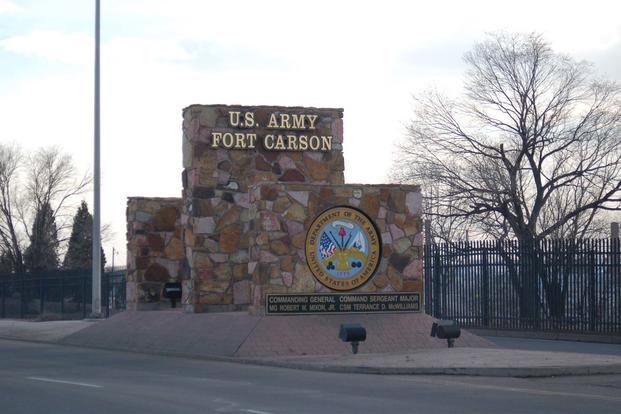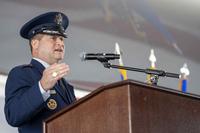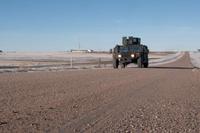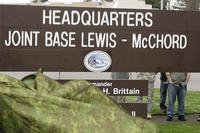As troops used Apache helicopters, artillery and rockets to attack fictional armored personnel carriers at Fort Carson on Monday, a small drone buzzed in front of the crowd — a symbol of battlefield innovation.
The exercise focused on large-scale combat, bringing together firepower from across military branches, and represented the culmination of seven days of training, said Major Gen. David Doyle, commander of the 4th Infantry Division.
The division is practicing for combat both on Fort Carson's extensive training range south of Colorado Springs and in Poland, as Russia is expected to ramp up its summer offensive in Ukraine.
Doyle said the division must be prepared to fight adversaries with tanks, aircraft, electronic and cyber warfare capabilities.
"If we are not prepared to deal with all that, we will not be able to do the job that we need to do. That's why we focus on bringing all of our combat power to bear," he said.
As a crowd watched from a cliff, the show of force was fierce, with howitzers and a High Mobility Artillery Rocket System sending up clouds of dust and smoke, and Apache helicopters swooping in to hit targets standing in for T-72 battle tanks used by the Russians.
While less flashy, drones flying across the battlefield helped to inform the soldiers' tactics during the exercise.
Wearing goggles that allow him to see through a small drone's camera, Master Sgt. Matt Taverner said he can gather information on the enemy to pass along to others, such as Apache helicopter pilots.
The 10th Special Forces Group showed off small drones developed in-house at the event that gather information and carry weapons, such as grenades, to a specific target. The work has been vastly accelerated by the conflict in Ukraine, soldiers said.
"The more times we fly, the more data we get, the more we can prove reliability," Taverner said.
The small custom drones can be carried by a larger drone made by Lockheed Martin, called the Stalker, that looks like a small plane and can take-off vertically.
It's a system that Doyle described as having immense potential.
"Imagine if we had 20 of those (Stalkers) dropping another 40 different smaller drones. ... That gives the local commander an enormous amount of flexibility to see and understand what’s happening on the battlefield or the ability to strike," he said.
Another unmanned aerial system on display Monday is intended to help soldiers in Bradley armored vehicles identify enemies beyond the horizon, said Chief Warrant Officer 3 Kris Gillespie with the Army Artificial Intelligence Integration Center. For example, soldiers in the Bradley could send up the drone, called the Hoverfly, while they are safely behind a hill to collect information.
Hoverfly data is displayed on a tablet, and the user can click on the screen and get the coordinates of the enemy, he said.
While satellite imagery can provide similar data, the satellites may not always be available and they have limitations such as cloud cover, said Josh Dexter, fire support sensor manager with Fire Cells - Targeting out of Fort Sill. This system provides immediate information, he said.
"I can engage the enemy without having to wait on something outside of my control," he explained.
The Bradley is the first vehicle with the integrated system, but Gillespie expects the system can be integrated into other military vehicles.
___
(c)2024 The Gazette (Colorado Springs, Colo.)
Visit The Gazette (Colorado Springs, Colo.) at www.gazette.com
Distributed by Tribune Content Agency, LLC.












